Are you dreaming of a beautiful aquarium, full of life with rich colour plants? Perhaps you have already started your project, but you found out that it is more challenging and you have invested far too much time and money all ready to meet your goal. Here you will find some helpful advice for setting up a successful planted aquarium without losing your mind.
The Shopping list – What do you need?
Fish Tank
It seems obvious, however a little forward-thinking at this point can make all the difference when it’s time to maintain your planted tank. having an aquarium which is hard to access due to height makes trimming plants etc very challenging. Larger aquariums are difficult to reach so the choice of the cabinet for your aquarium must take into account accessibility before aesthetics. The location of your planted tank should be as accessible as possible, considering the amount of work required to keep it flourishing and beautiful. The vast majority of aquarium cabinets are designed with this in mind. They position the aquarium at the right height for most of us to easily access. Aquarium sizes range from nanocubes to large show tanks. Aquarium water in large planted tanks is easier to maintain than it is in smaller aquariums.
For fish, the larger the tank, the better. A shoal of Tetra all swimming together across a larger planted tank is simply beautiful but is more expensive. However, smaller tanks are better if space is an issue. With the right choice of aquatic plants and fish, a small tank can look just as good as larger tanks do.
Before deciding on your aquarium, you need to know what kind and how many fish species will live in your planted aquarium. The more room for fish, the better. Otherwise, you will end up with unhappy and frustrated fish. Larger amounts of aquarium water will dilute any toxins more efficiently and are more resistant to sudden changes in the water chemistry which can affect fish and aquarium plants.
Once you have chosen the perfect aquarium, you need to find the right spot in your house for your planted tank to go. Ideally, a spacious area with easy access is best. Make sure this is away from air vents, heaters and out of direct sunlight. For easy set up it would be perfect to have power sockets to provide power for filtration, lighting and heating.

Lighting
Aquatic plants require the ability to cycle through the photosynthesis process in order to grow. Without it, plant growth is greatly affected. While some aquatic plants can grow under low lights, those red plants you see on Instagram require higher-powered lights. As you know, planted aquariums have a mixture of plants. Understanding the needs of your plants will help you provide the correct lights.
A light unit which allows you to program the on/off time, light levels and power settings will be helpful when automatic the co2 supply. Ideally, lights should come on one hour after the co2 begins to flow into the aquarium, and go off one hour after the co2 stops.
When growing plants with different needs, consider creating shaded areas for the plants that prefer lower lights.
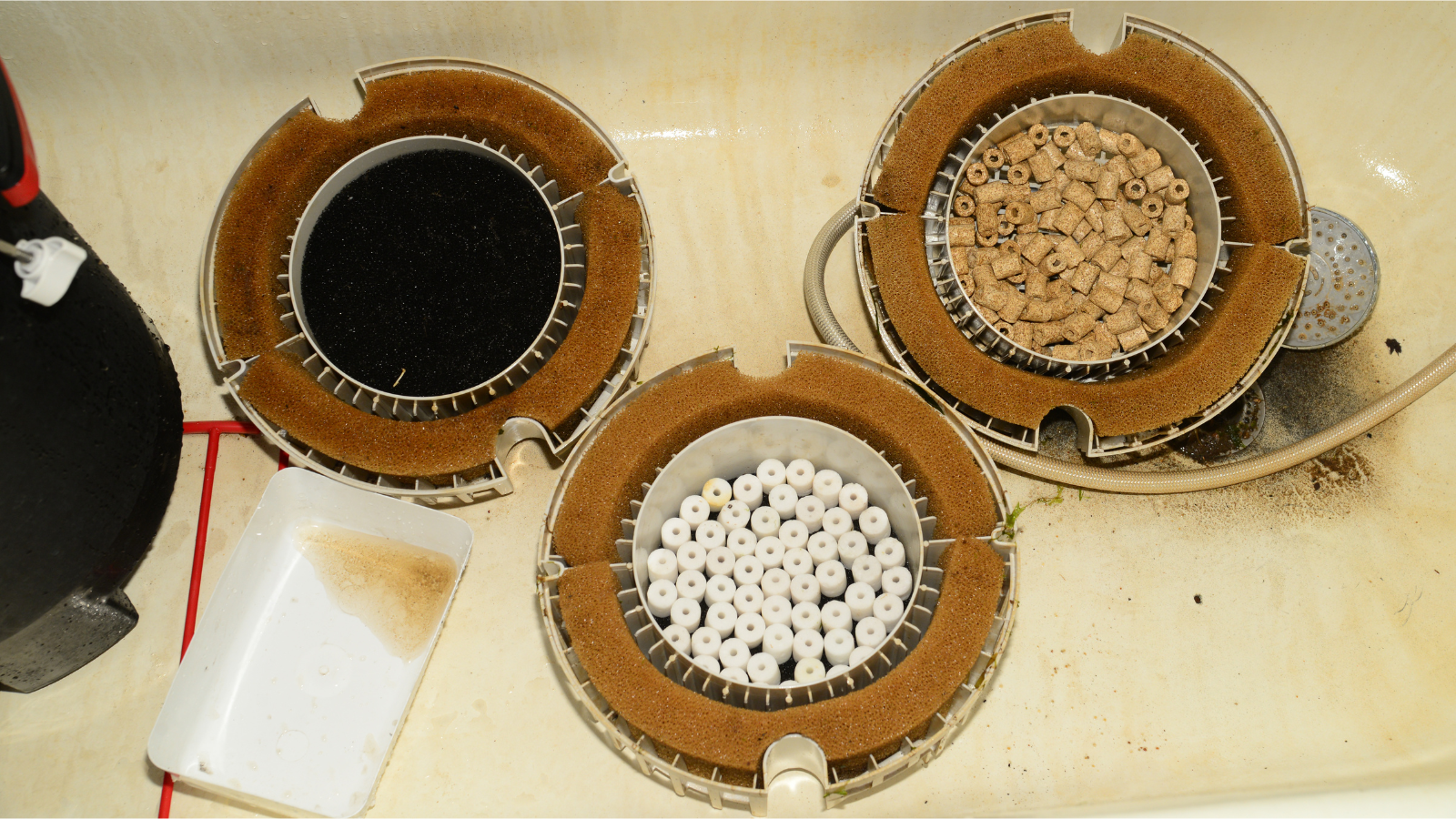
Filteration
A vital piece of equipment for your aquarium is the filter. If the tank water is not cycled the water becomes polluted and your livestock will suffer.
There are three types of filtration:
- Mechanical – makes your water clearer
- Biological- makes your water safer
- Chemical- remove impurities from the water
It is important to choose a filter that is suitable for both the aquarium size and the fish requirements. The easiest method of picking a strong enough filter is to make sure that it is capable of cycling the total volume of the aquarium six times per hour. This information is easily found on the manufacturer’s websites. We must also pay attention the water surface of the aquarium. When co2 injection is happening, surface agitation is important to allow gas exchange to take place. In a planted aquarium with no surface agitation, many aquarists report issues with oxygen and co2 levels. additionally, you can be sure to see a lot of bubbles gathering at the water surface.
There are three kinds of standard filters commonly used on planted tanks:
- Hang-on-back
- Internal
- External canister
Note: CO2 diffusion can be attached to the external filter using an inline diffuser. If you plan on using an Inline diffuser, you must use an external filter with outlet pipes either 12/16mm or 16/22mm in width to be compatible with our diffusers.
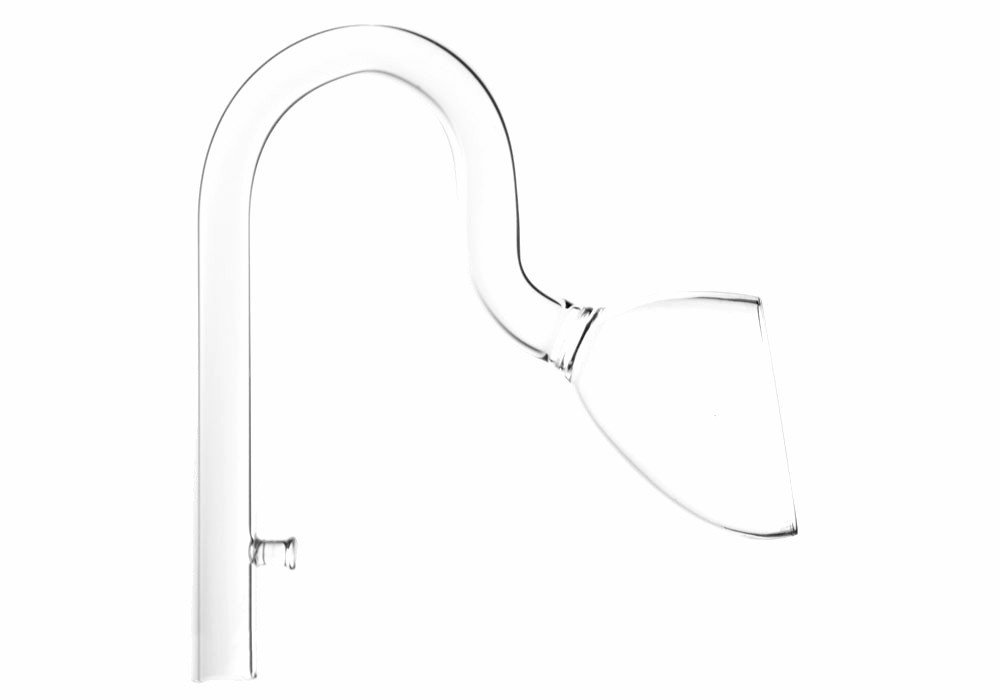
Filter outlet
You can simply buy “Lily Pipe” or Spraybar. These are important for distributing the filter outlet evenly across the tank. Which one is chosen is an aesthetic choice.
Substrate
It may not seem too important, but the right substrate can be very important when creating beautifully planted aquariums. Depending on the plants and livestock, your choice of substrate matters
Different plants prefer different substrates depending on how they get their nutrients within the aquarium.
Some aquarists like to add a pinch of colour, choosing bright pink, neon blue or fire engine red which all in all doesn’t harm aquarium habitats.
The substrate should be filled to a depth of a maximum of 2 inches. You will need to remember to maintain your substrate and clean from wastes when needed.
Aquarium Heater
Providing the correct water temperature for both your plants and livestock is not always straightforward. Each fish has a range of temperatures it can survive and a temperature at that it will thrive.
Many plants are similar, however, they generally have a wider range of parameters to work with which allows us to tune the aquarium parameters to the needs of the livestock, with the plants’ needs being considered secondary.
An aquarium heater that gives you the option to adjust the temperature is an important piece of your setup. Having a secondary heater as a backup is also good practice, in case of emergencies.
Modern aquarium equipment developments allow us to place aquarium heaters inside external filters which reduces the amount of equipment visible within the aquarium – A handy solution for those aquascapers looking for the viewer’s attention to remain fully on the planted aquarium alone.
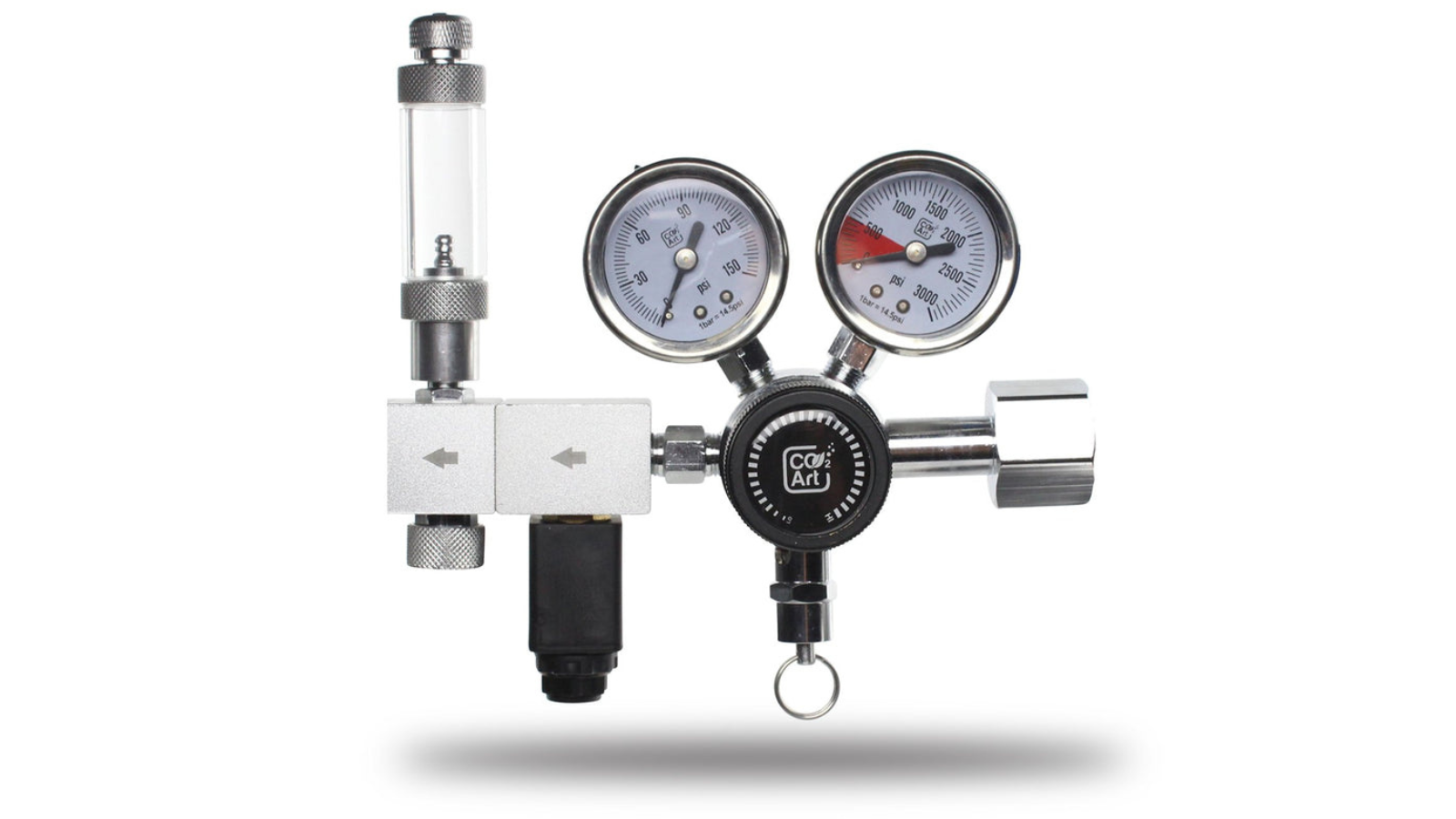
CO2 Regulator
Photosynthesis relies on carbon dioxide gas being available in the aquarium. Without a CO2 regulator, it is not possible to safely inject carbon dioxide gas into your aquarium without one. The CO2 regulator controls the pressure between the Co2 gas cylinder and the diffuser with a needle valve. In order to achieve that fine mist, higher pressure of co2 is needed to produce the finest bubbles. Low-pressure results in larger and irregular bubbles.
Most modern regulators are fitted with a bubble counter which attaches to the regulator via its own needle valve. The tubing leading to the diffuser attaches to the other end, allowing the co2 to pass through the water chamber creating a stream of bubbles. As we adjust the needle valve on the regulator, the bubbles will either increase or decrease, allowing us to set the optimum rate for our aquarium.
CO2 Art Regulators both come fully equipped with a precision needle valve, giving the user absolute control over the co2 injection.
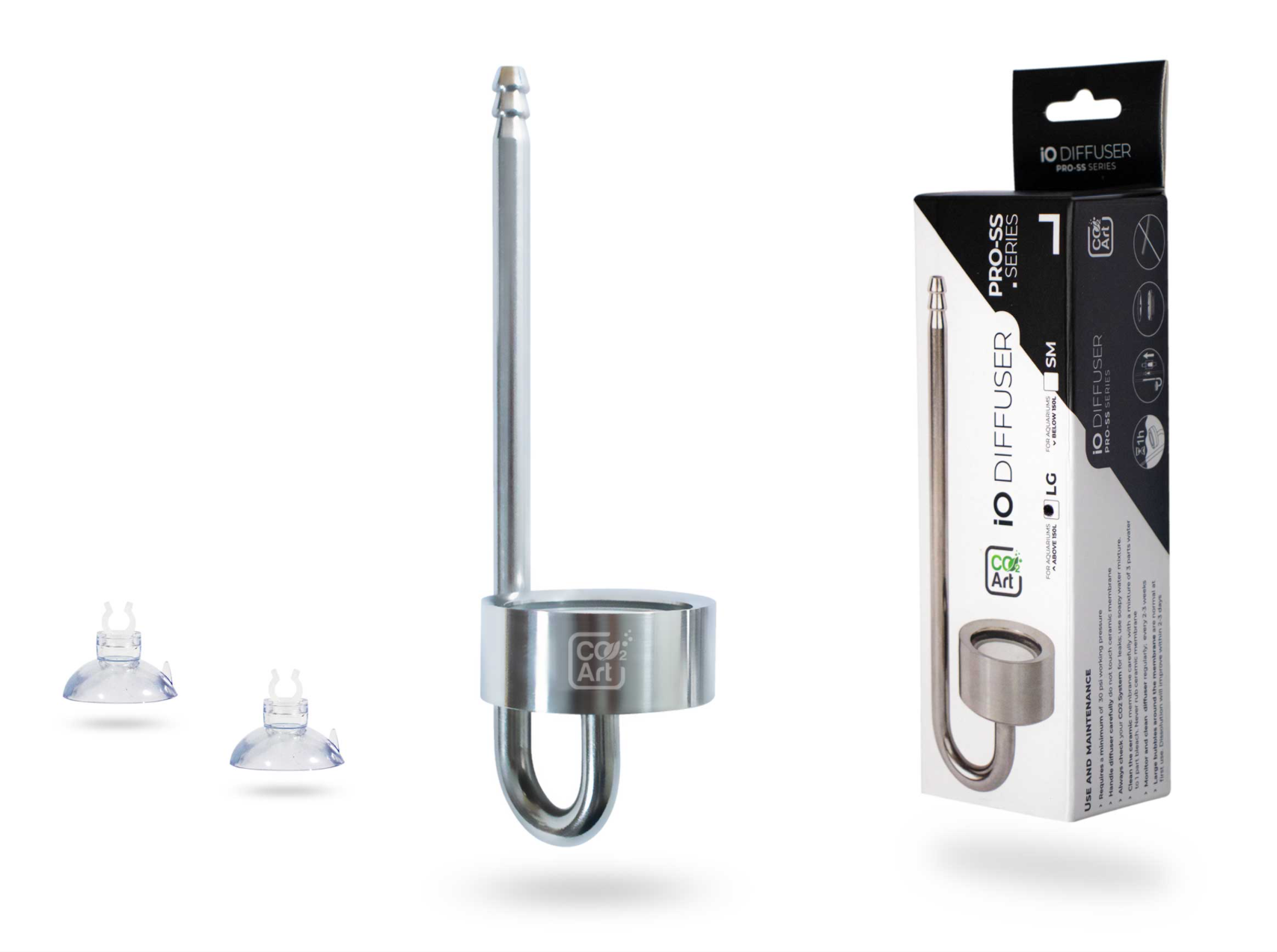
CO2 Diffuser
A diffuser is what breaks down CO2 before it enters the reaches the aquarium plants. Thanks to the regulator, the CO2 builds up behind the ceramic element of the diffuser and slowly breaks down into tiny bubbles, bubbles so small that they will flow into the water forming a fine mist which is easily absorbed by the aquarium plants. Without a diffuser, the aquatic plants would not be able to absorb co2 via this effective method will not reward us with the plant growth we hoped for.
A co2 system is not complete without the diffuser and co2 injection is not possible. As far as equipment goes your choice of diffuser is important. Depending on your preference and equipment choice, your diffuser options come down to two methods. Intank diffusion via a small diffuser attached to the inside glass of the aquarium similar to an air stone or the diffuser can be fitted inline by using an external filter.
Both have the same principle and are capable of maintaining the optimum level of carbon dioxide.
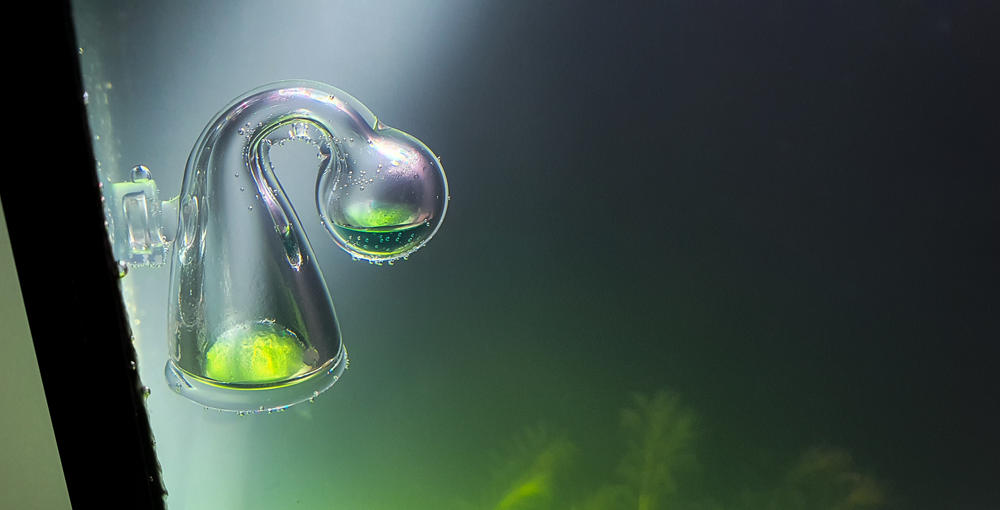
Drop Checker
Maintaining the optimum level of CO2 in a planted aquarium is not something we can do by simply looking at the aquarium. Not even George Farmer can do this. Instead, we must monitor the level of dissolved CO2 in the aquarium water. This process has been made easy by simply adding a drop checker to the inside of the aquarium.
This device sits inside the aquarium, being filled with a solution of water that’s exactly KH 4 (4 KH water) and a pH reagent called bromothylene blue (also found in low-range pH test kits). The gas reacts with the solution and changes colour according to how much is present. The aim is to get a nice lime green colour which equates to 30ppm CO2, which is regarded as safe in most aquariums.
Check Valve
Ofter regarded as optional, we feel the check valve is worth listing here as important. After all, if we can do something small with little extra cost, to prevent something big, why not view the check valve as an important element to a successful co2 system?
The check valve is attached inline between the diffuser and the bubble counter. This prevents any water syphoning back upwards and causing problems with your co2 system.
CO2 gas cylinder
The source of Co2 is often one of the most troubling decisions we must make. The most important thing to consider here is the ability to provide your plants with a continued supply of CO2. The last thing we want to happen is your plants going without carbon dioxide and all that healthy growth being ruined with ugly green algae. There are a few types of cylinders which are available, however, in some countries, it can be different.
CO2 fire extinguisher, Sodastream cylinder, Paintball cylinder, disposable bottle. You will find even small gas cylinders in your pet shop, however, they are not the most economic for use of carbon dioxide gas in a planted aquarium. Just be sure that the cylinder is equipped with a standard specification valve assembly mounted to the neck of the cylinder, to which the CO2 system regulator can fit.
Plants in an aquarium with a co2 system is also known as a high energy setup. This is because of the high amounts of energy needed to allow your plants to thrive. If a single element of the co2 system is faulty and co2 is no longer able to be provided, everything else becomes out of sync and this causes the plants to fail over time. It can also encourage algae to outcompete your plants for nutrients. When algae settles in, it becomes difficult for your plants to thrive.
Conclusion
We hope that the above list will help clarify the requirements for setting up a successful CO2 enriched aquarium. Just remember that with a little bit of planning and research, anything is possible. The planted tank hobby is filled with lots of helpful and kind people who will always be happy to help you. This is a hobby after all, enjoy it.

